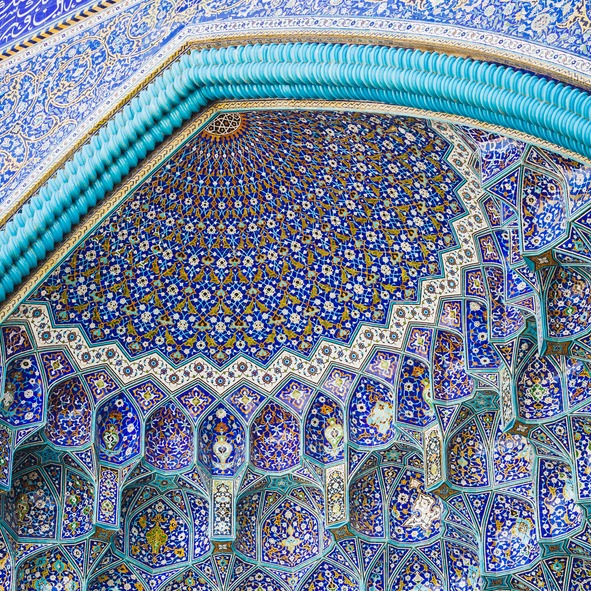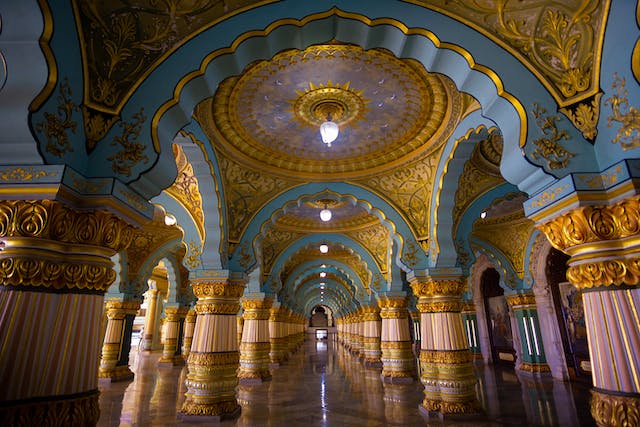People sometimes think of ceilings as plain and ordinary. They are often overlooked, and sometimes, they do not receive attention like any other aspects of the house. However, when talking about mesmerizing and jaw-dropping ceilings, the world has plentiful of them. And these architectural masterpieces could undoubtedly capture most of the people’s attention.
Here are some of the most famous ceilings in the world.
Sistine Chapel
Because it was the product of a Renaissance artist and among the most spectacular paintings ever done on such an unusual canvas, the Sistine Chapel attracted many people’s attention. After Michelangelo finished his mural painting, the fresco masterpiece was considered the peak of the Renaissance period. Many people say that the painting of the ceiling of the Sistine Chapel is astounding. Almost 5 million tourists a year pay money and wait in line for hours only to take a look at that stunning ceiling.
Peacock Room in Castello di Sammezzano, Leccio, Italy
The Peacock Room in this ancient Italian palazzo is located in Florence, Italy. It is known for its colorful and mesmerizing ceiling. The Sammezzano castle, which they constructed in the Moorish style, includes 365 rooms, has served as a hotel, a gathering place, a residence, a spa, and a golf course.
Ferdinando Panciatichi Ximenes d’Aragona dedicated his life to transforming a very much ancient palace into a Moorish-style place. The noble Italian architect and engineer perceived a world of magnificent and exceedingly exotic forms and colors, which he created in Leccio between 1843 and 1889. The Sammezzano features the Peacock Room, which showcases a complex layout with rainbow colors to create a kaleidoscopic effect.
Heydar Aliyev Centre, Baku, Azerbaijan
The curving auditorium of this cultural auditorium in Baku, Azerbaijan, which opened in 2012, has a seamless floor, ceilings, and walls. It is a beautiful establishment created by architect Zaha Hadid, who used sealed and flexible white oak for both the ceiling and walls, angled down to create a womb-like impression that feels like floating in space, flowing and beautiful.
The impact of this architecture is beautiful and genuinely astounding, as if Zaha Hadid had demolished and rewritten the norms of architecture. In reality, there is a metal frame that supports the auditorium’s geometrically intricate laminated white-oak exterior. It helps give the building the appropriate sturdiness while enabling the auditorium to seem as though it is hurtling through space.
St Stephen Walbrook, City of London
St Stephen Walbrook is quite a relatively tiny structure when viewed from the bounds of the Urban roads of London. However, the interior of t his church, constructed by Christopher Wren, is among Europe’s late-eighteenth-century architectural masterpieces. Eight Corinthian-style columns and eight solid arches highlighted by glass windows support this spectacular coffered dome.
Based on his initial model, this ceiling is a perfect replica of the dome Christopher Wren wanted to construct for St Paul’s Cathedral. However, several Church Commissioners declined the offer. Luckily, inside the St. Stephen Walbrook church, we can visualize what Christopher Wren had in mind. The 19.3-meter dome, built using copper, timber wood, and plaster, is small despite its size.
Shah Mosque, Isfahan

Shah Abbas, a Safavid general of Persia, transferred the Persian capital to Isfahan during the late 16th century. He commissioned a spectacular series of enormous and exquisite religious and civic structures. However, because baked mud brick seems to be the only widely accessible construction material in Isfahan, there were many concerns that the new constructions, even though outstanding, would be unappealing. New methods for firing colored mosaic tiles, on the other hand, enabled the Shah’s architects to create magnificent representations of designs, as seen in the Shah Mosque.
It’s hard to imagine this is made of mud bricks because it’s so beautifully created. It was designed by master calligrapher Rezza Abbasiblue- showcasing green, pink, teal, and yellow tiles that capture and reflect the light of this vibrant and hot region. This architectural piece invigorates calm spaces beneath Abbas’s mosque’s huge blue dome.
Ely Cathedral, Cambridgeshire
The beautiful timber lantern hanging on the top of the central octagonal tower of Ely Cathedral, constructed in 1334 by royal carpenter William Hurley, is one of the finest accomplishments of structural engineering and design during the medieval period. The lantern is the center of an eight-pointed star from the cathedral floor, accompanied by a sculpture of Christ in Glory at its center.
The evident timber fan vaulting and a secret tent-like latticework of oak beams support the 30ft-high lantern, made entirely of English oak trees. Surrounding the lantern are the wooden panels, ornamented with painted angels from the 19th century, that could open and attract the light from the outside.
Grand Central Station, New York
People overlooked the zodiac-inspired ceiling of Grand Central’s enormous concourse for decades. It was because of the nicotine tar that layers throughout the ceiling of the concourse. It is the consequence of many cigarettes smoked by decades of passengers finding their way to the station’s platforms beneath the massive Beaux-Arts style establishment constructed by Warren and Wetmore and Reed and Stern.
Inspired by ancient astronomy maps, the zodiac ceiling was created by French painter Paul César Helleu and American artist Charles Basing with their assistants. They painted the ceiling blue-green and added the zodiac signs etched in gold leaves. The design evoked the fall and winter night sky from Greece and Southern Italy.
It was only in 1998 that people could see the beauty of the ceiling in Grand Central after it was cleaned and refurbished.
San Pantalon, Dorsoduro, Venice
This oil painting by Gian Antonio Fumiani, even though unfinished, is still gorgeously made. It requires a 50 cent Euro coin to light up this ceiling.
A stunning 17th-century oil painting, measuring 4768 square feet, creates the illusion of the church’s structure continuing upwards. The chiaroscuro colonnades brought this illusion and a flock of flying angels through golden-yellow skies towards the white light of the heavens above. This artwork provides the impression that the Baroque church extends skyward, depicting a chaotic, celestial scenario.
Church of the Savior on the Spilled Blood
Built on the area of Czar Alexander II’s assassination in 1881, this church was subsequently closed down by Stalin and destroyed during WWII before being reopened in 1997. It has been neglected for decades, yet it is today one of St. Petersburg, Russia’s most famous tourist attractions. It’s because the Church of the Savior on Spilled Blood is covered in exquisite mosaics portraying several biblical scenes from floor to the walls and the high ceilings.
Temple of Heaven, Hall of Prayer for Good Harvests, Beijing
They used no single nail in the creation of the ceiling of this temple. Instead, they used a succession of interlocking hardwood pieces during the historical Ming Dynasty, around 1420, on the western calendar.
This three-level type of ceiling indicates the days, months, and seasons of the year, adding a mathematical element to what is primarily a religious structure honoring the emperor.

